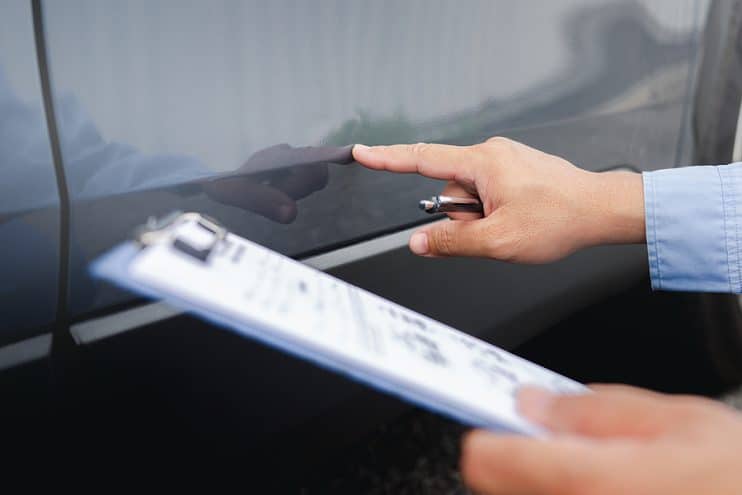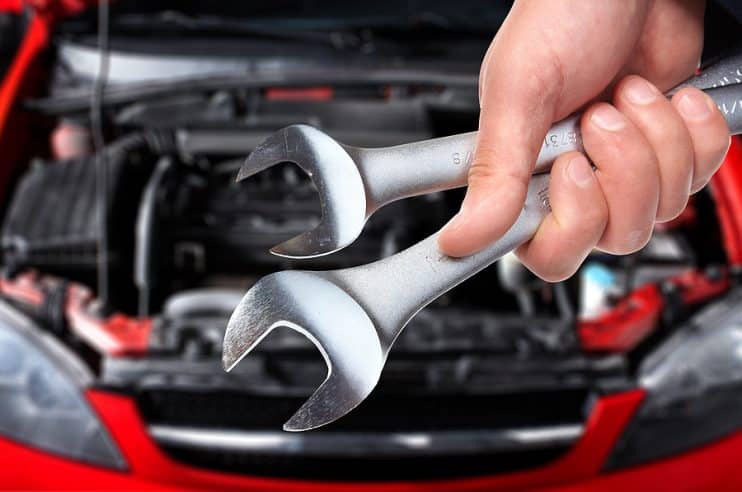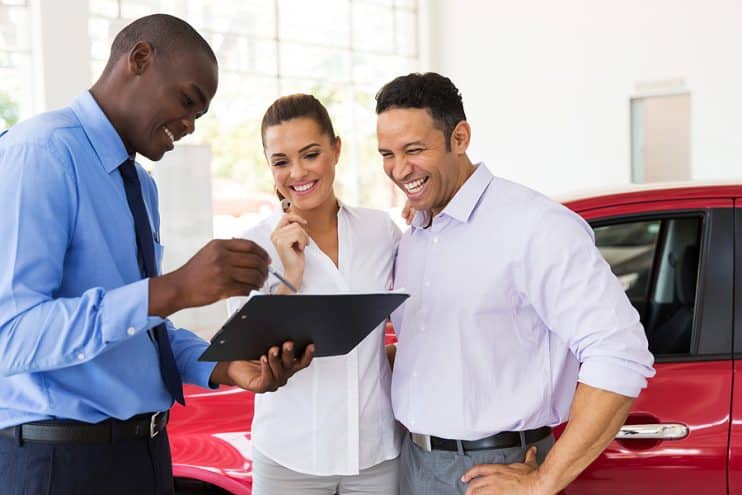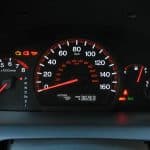
When you sell on your new or second-hand car, you’ll want to achieve the best price possible. A well looked after car, both in terms of the exterior and the engine is obviously more desirable to a buyer, and will hence attract a better price. However there are many factors that can devalue a vehicle, from a messy interior to a brakes that’ve been pushed too hard. What are the ideal ways to take care of your car to achieve the optimal sell on price?
Table of contents:
Interior
When you’re out on the road and sitting in the car, it’s very easy to treat the interior like your front room. Remember that any potential buyer will want to go on a test drive, and they’ll notice every little problem and speck of dirt. How can you impress them with the quality of the cabin?
Smoking
Regardless of the health hazards of smoking, repeatedly lighting up in your car will leave a stale smoke smell that can be near impossible to shift. Continual nicotine infused vapours discolour your interior, especially with soft or neutral colours and there are people out there that won’t buy a second-hand car that’s been used by a smoker. Avoid damage by getting a vape, buying gum or pulling over if you must have a cigarette. And if you have been smoking you can use our guide on getting rid of smoking smells.
Messy Family Members and Kids
Children can be naughty, kicking seats and leaving dirty foot marks all over the place, or smearing windows and placing dirty fingers on the upholstery. With smaller children vomit, spilled drinks and bits of food can quickly turn the back seat into a complete disaster.
Train your kids to behave in the car and tune out their requests for drinks and snacks on the road. If you have to feed them on longer journeys, then carry wet wipes and cleaning products to deal with any problems. If your seats are already damaged, try to you can save them with our best advice on how
to clean car seats.
Broken Equipment and Signs of Wear
Whilst no second-hand car is going to look quite as good as new, a potential buyer will quickly zero in on damage and it will most likely become a point for them to ask for a discount. Cracked panels, ripped upholstery, and broken switches all dramatically impact the sell-on price, and you may find that you make more money by completing a fix than you lose in sell-on price.

Exterior
Everyone makes judgements based on first impressions, and problems with your car’s exterior could instantly make up a potential buyer’s mind to walk away. Keep the outside looking good with the following tips:
Damage to Your Bodywork and Scuffed Wheels
Any kind of scrapes, scratches, rust or problems with the bodywork will instantly suggest that your car has suffered from a real lack of care. Be aware when you’re out on the road, and avoid the kind of driving that’s likely to cause damage, such as squeezing through tight gaps, speeding and parking away from the kerb.
If your car does suffer damage, then it’s always advisable to go for a quick fix before your exposed bodywork starts to rust. Check our guide out to repair scratches and stop rust from becoming a problem.
Dirt and Grime on the Bodywork and Paint
Good looks always make a difference. When your buyer sees your car they need to get the right feeling. Dirt and grime on the exterior suggest you can’t be bothered with good maintenance and it’s important to make sure that the paint job is consistent all over the car.
Improper cleaning can damage the paintwork and reduce the desirability. Clean your car with a car shampoo, never use washing up liquid as the salt and solvents can erode the paintwork. Certain kinds of dirt, such as birds mess can even cause considerable damage and will always need fast attention.
DIY Repainting Job
Resprays are difficult for even the pros, so an amateur job will look exactly as you’d expect. Low quality and off-putting. If you must repaint your car, stick to neutral colours and avoid garish boy racer tones like glittering purple or neon shades. Be aware that colour is a big buying point with many people, and you don’t want to put them off a good car because of a simple thing like paint.

Driving Behaviour
The way you handle your car out on the open road is likely to impact the condition of the car. The following points will help you maximise the sell-on value:
Too Much Mileage
Driving too many miles will naturally devalue your car. It’s one of the first stats a buyer will examine, and often a leading headline in used car adverts. 13K miles a year is the acceptable average, with any more than this causing considerable devaluation.
The major milestones to consider are 30K, 60K and 100K, as when these numbers are surpassed the value drops significantly. Try to sell on before you hit these ceilings. And as a pro-tip, you may want to even post a picture of the odometer in your ad to assure potential buyers that the mileage is accurate.
Too Little Time on the Road
Cars are built for journeys. Diesels in particular need a good run out to burn off the soot and dirt that has accumulated in the DPF, and many cars need to get up to speed for the oil to work efficiently. Take your vehicle out for a good 10-15 mile plus run every week, and ensure the engine gets up to some good speeds.
Riding the Clutch
Riding the clutch is bad news for this part as it erodes the plates as they slip against one another, causing premature fatigue. It’s also advisable not to sit with your foot down on the clutch at junctions and lights, as this puts additional unnecessary pressure on the release bearing. Buyers will be very sensitive to the behaviour of the clutch on a test drive, and poor performance could be an important decisive factor.
Putting the Wrong Fuel in the Tank
Everyone makes mistakes sometimes, but putting the wrong fuel in the tank is one error you won’t want to compound. If you do use the incorrect gun at the pumps, don’t start your car. Instead push it to the side of the forecourt, and call your preferred maintenance team. Otherwise you could be looking at a wrecked engine.

Maintenance and Ownership
A car will need regular attention to keep its value. It’s simple enough to keep up with services and checks, and these tips will help you stay on top of what’s required:
Ignoring Service Schedules
You might think that the clever money saves on services, but an expert eye can spot early signs of parts failure, which if left unchecked could have a knock on effect and cause more damage than you realise. Services also clean dirty parts and filters, which improves fuel economy and prevents premature fatigue.
Dismissing Warning Lights
Modern cars are controlled by an ECU. Through its sensor systems, this computerised unit gives drivers an unparalleled view of the condition your vehicle’s workings. If a dashboard warning light comes on, take it seriously or you could be looking at a rather weighty repair bill.
Personalisation and Modification
Whilst some mods might reflect your personality, such as tinted windows or big chrome alloys, they make it harder for buyers to connect with your car. If you have already modified your car, then it’s often best to leave the parts in place, as further changes are likely to cause damage.
Lack of Proper Documentation
This is a big one. No service history? How will the potential buyer know that the car has been regularly looked after by the right kind of professional? Keep the service history very safe and if you can, also keep receipts from any work you’ve done to give people full clarity on their purchase. It shows you’re a reputable and honest seller.
Missing Keys
Even if you have lost a spare due to no fault of your own, it creates a certain picture of the sale. No one wants to feel like there’s another key out there, floating around for their new second-hand motor. Get a replacement from a locksmith or accredited supplier.
Taking too Much Time to Sell
Want to sell? Be fast, proactive and effective. If your car has been floating around the ads for too long or sitting on the side of the road with a handmade sign, then people will stop looking at it seriously.
Holding on to the Car for Too Long
Would you rather buy a 3 year old car with 40K miles on the clock, or a 7 year old car with 45K miles on the clock? If you’re not using your car very much, then not only can the light exercise actually damage the engine, but the price will devalue dramatically whilst it’s sitting in your drive.

Purchase Points
You can even start thinking about retaining your car’s value even before you buy. These key factors are essential considerations if you’re concerned with sell on value:
Previous Owners
Potential buyers want fewer owners. They need to see that the car has a clear audit trail and they’ll judge the quality of the car by the person selling. The more owners there are in this picture, the more difficult it will be for them to buy.
Get the Right Make, Model and Colour
Some makes are highly desirable. Some are not. Do your research when buying to ensure you go for something that people will want when you’re finished behind the wheel. You might pay a little bit more, but you’ll get more back.
Be careful with colours too, go for something unobtrusive and popular like black, white or grey. And finally if you live in a hilly area then buyers will want a high torque engine, and a convertible will sell better in an area with less rain.
Pushed into the Sale with Incentives
Everyone’s encountered a smooth talking salesperson. The car trade is notoriously full of these individuals. Avoid racking up your purchase price with so called freebies and finance deals, and remember that if the dealership devalued the car, then it will likely suffer from a similar drop in price when you try to sell it on.
And Finally
Most of our advice is common sense, but the one key factor across all the points is a proactive attitude. Car ownership requires a little investment and commitment to regular services, cleaning and thinking about the car as an asset rather than a tool. Putting in your time into your vehicle’s upkeep will pay dividends in the future.













.png)